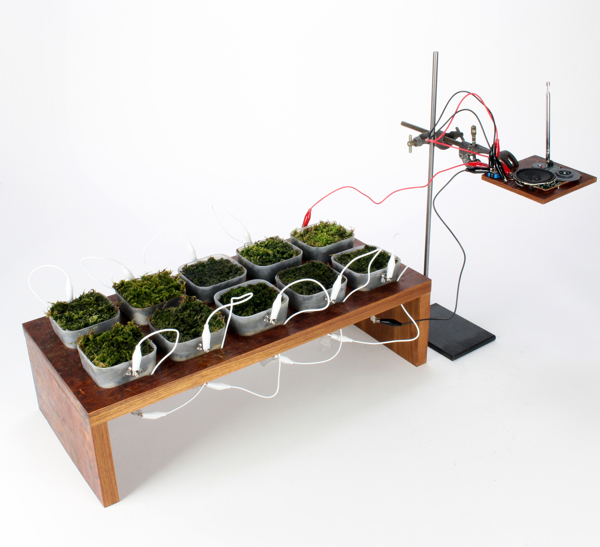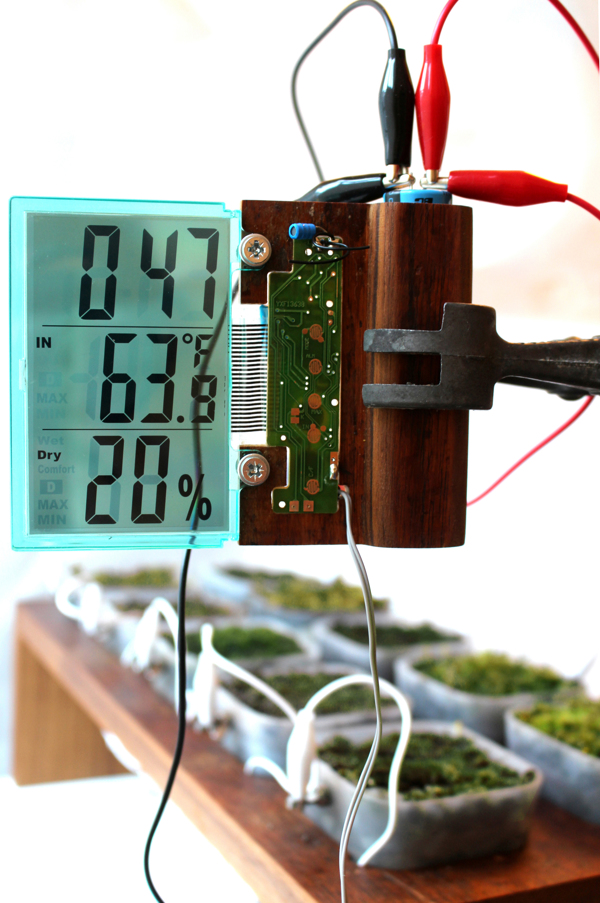
Developers at the University of Cambridge, Fabienne Felder, Ross Denis, and Dr. Paolo Bombelli, have created a system of clean power to test a specific use of natural renewable energy sources. This system of biological solar panels uses moss to harnesses ample power to fire up an FM radio. And how does this process achieve green power? From photosynthesis and moss! Incredible! The moss-covered device is the first plant-powered radio ever built, as well as the first moss-energized object that needs more power than an LED.
Felder, Denis, and Bombelli applied emerging biophilic technology in order to enable the moss to generate power. They analyzed how electrons and protons are transferred into electrical currents when plants are undergoing photosynthesis. Moss FM contains 10 Photo Microbial Fuel Cells that can conduct power by connecting the series in a parallel line formation or by one single cell. Photo-MFCs contain an anode where photosynthesis-generated electrodes congregate, a cathode where the electrons are dispersed, and a customized external circuit that hooks the anode to the cathode.
All moss used in the experiment grew above a compound of water-retaining materials, biological matter, and conductive substances.

In an interview with Deezen, the researchers stated that “theoretically any photosynthesizing plant could be used as a biological solar panel.” Pretty awesome! Moss was selected for this experiment because of its phenomenal photosynthetic ability, enhancing the efficiency of the system.
Although this entire procedure is still in its primal stages of development, the Microbial Fuel Cells use a natural biochemical process that alters how the radio is designed. So far, the radio has the ability to work for several minutes from a battery that gains its charge from the moss, as the radio can only seize 0.1% of the electrons produced by the moss. The attached LCD screen can only run when attached to a capacitor or when it is hooked into the circuit of moss. The circuit can generate 2.9 mA at 1,200 mV, and the parallel circuit can achieve 18.7 mA at 246 mV.
These biological solar panels are comparable to photovoltaic technology, for it will have to undergo very similar developmental procedures. All possible conductive materials need to be analyzed, all plants need to be perused, and proper maintenance maneuvers for this technology need to be established. All of these factors will determine the optimal way to achieve a steady flow of electricity.
This type of technology begs the question of whether traditional energy forms can be replaced by a method of moss-generated power. Will homes eventually be able to generate green electricity via plants and allow their photosynthetic behaviors to power our electronics? Perhaps these technologies will be employed, helping make the air cleaner, paving the way for a greener planet, taking the phrase “going green” to new heights.
Story via Deezen, mosspower.tumblr.com
Advertisement
Learn more about Electronic Products Magazine





